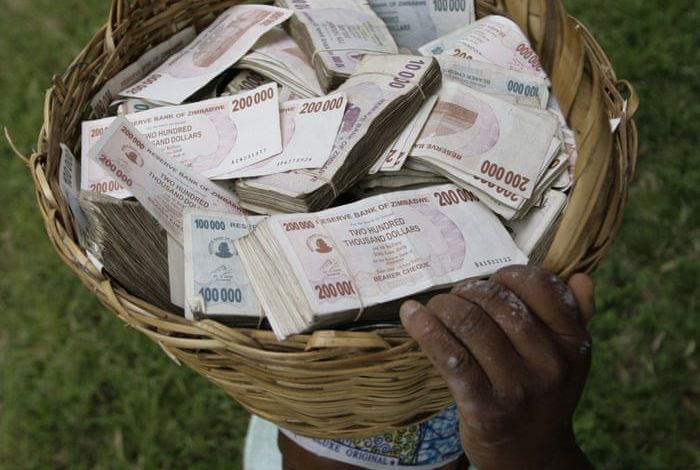
In the late 2000s, Zimbabwe experienced one of the most extreme cases of hyperinflation in world history, leaving the country’s economy in turmoil and its currency nearly worthless. At the height of the crisis, inflation soared to an unfathomable rate, with prices doubling every few hours. The government eventually printed a 100 trillion Zimbabwean dollar banknote—the largest denomination ever issued.
The roots of the crisis trace back to economic mismanagement, land reform policies, and declining agricultural output, which led to plummeting exports and widespread food shortages. Zimbabwe’s reliance on printing money to finance its growing debt only exacerbated the problem, triggering a hyperinflation spiral that peaked in 2008 with an inflation rate estimated at 89.7 sextillion percent.
As a result, daily life became a challenge for Zimbabweans. Basic goods, such as bread and fuel, became unaffordable, and shops struggled to keep up with the constantly rising prices. Citizens were forced to carry bags of banknotes for simple transactions, while the black market for foreign currency thrived.
In response, Zimbabwe abandoned its currency in 2009 and adopted a basket of foreign currencies, with the US dollar becoming the most widely used. This move helped stabilize the economy, though it also resulted in challenges such as liquidity shortages and limited access to credit. Many citizens found themselves relying on cash transactions as the banking system struggled to adapt.
Despite the shift to foreign currencies, Zimbabwe’s economy remains fragile. Efforts to introduce a new Zimbabwean dollar in 2019 aimed at regaining monetary sovereignty have faced skepticism, as the country continues to grapple with inflationary pressures.
Today, the legacy of Zimbabwe’s hyperinflation serves as a reminder of the devastating consequences of unchecked economic policies. Many Zimbabweans still hold onto their 100 trillion dollar notes as a symbol of the crisis, now a collectible item around the world. While the economy has stabilized compared to the 2000s, challenges remain as the nation seeks a path to sustainable growth and recovery.
